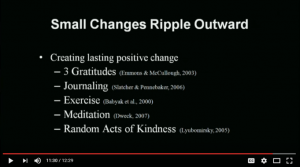
Abstract vector created by vectorjuice – www.freepik.com
My first leadership job was when I was 24. I was a Selling Manager in a large department store. I managed a 40-person retail sales team, Men’s Sportswear, and became well-versed in the customer who loves a good Polo shirt and a pair of Dockers.
Like most teams, some of the staff were fantastic and others were a real pain. That group arrived late to their shift, seemed to do as little as possible, and left early. I remember saying to my boss, “They have no work ethic. They just don’t care!”
The job wasn’t stimulating, and I was perplexed by trying to motivate the team to fold sweaters, greet customers, and sell credit card accounts. I leaned on my extroverted personality and thought that by being chummy I could charm them into showing up on time and working harder. I gave prizes for perfect attendance and bonuses for selling credit cards. I also threatened punishments and used corrective action.
Guess what? It all failed to motivate anyone’s behavior in a meaningful way. My toughest team members only performed if I was monitoring them.
Motivation via monitoring. Who wants to do that?
Leadership is about getting results through others, and I had no idea how to do it. Looking back, I wish I had known and understood how to apply an important theory in Psychology. It explains what drives motivation, or the willingness to do something. I would have learned early on I was going about it all wrong.
In this article, we explore Self Determination Theory and present a dozen ways a leader can leverage it to spark motivation in the team or within someone else.
Self Determination Theory
Renee, a former client of mine, recently described why she loves her job:
“First and foremost, I love the people I work with and the culture of the organization. Everyone is supportive of each other. I also really like the work that I do and I’m good at it. It took a while for me to figure out my strengths but now I’m in a job where I get to use them. Finally, I have a great boss. She “gets” it. She gives me direction and support when I need it but backs off too. She is one of the first managers I’ve had who makes me feel like she really trusts me. It’s still stressful sometimes, but in a good way.”
Do you think Renee is motivated in her job? You bet she is.
The short description she provided ticked off each component of Self Determination Theory (SDT), a macro theory in psychology that explains human motivation. In a nutshell, we are motivated when the following psychological needs are met:
- Relatedness – A feeling of belonging. It is often realized by feeling supported and seen.
- Competence – This is feeling mastery and confidence in our work. Also, being able to learn, feel challenged, and grow.
- Autonomy – Having choice and making our own decisions.
These three psychological needs create intrinsic motivation. This is doing something for its own sake, not because there is a reward or someone else told you to do it. Extensive research points to the connection between self-determination and performance outcomes. It is no wonder that when these three needs are satisfied, it promotes “…autonomous motivation, high-quality performance, and wellness.” (Deci, Olafson, and Ryan March 2017).
We all know what it feels like to have our expertise recognized or to come up with a great idea and do something about it. As well as, that feeling of connecting with people who support who we are and what we want. It is meaningful. This all makes us feel in control – we are self determined. It is no wonder it leads to improvements in well-being.
It is also the reason why cash incentives and punishments don’t elicit sustainable motivation in others. There might be a spark of motivation and changed behavior but if these psychological needs aren’t met, then performance will degrade or maybe get worse.
Like in Jim’s case. Here is how he describes his experience:
“Each morning I wake up with dread. The last thing I want to do is go to work. I have plenty to do but the work is mind-numbing. I tried to talk to my boss about it but now he gives me tasks like creating Powerpoint slides or taking notes in meeting. It is clear he can’t find anything challenging for me to do. I have ideas about how to bring-in more business, but it falls on deaf ears. I’m usually met with, ‘We tried that five years ago and it didn’t work.’ We could be doing some really innovative stuff, but I get blown off. Now, I stay quiet in meetings and only do what I’m asked to do. It’s a good paycheck, at least.”
Jim’s experience is nearly opposite to Renee’s due to the absence of relatedness, competence, and autonomy. More so, SDT also informs us that humans are grounded in a desire to be challenged and grow. Jim feels stagnant in his job. The good paycheck doesn’t do much for his motivation to perform.
Upon learning about SDT, many leaders I work with say “I get it. This makes sense. I have felt this before too.” It becomes easy to empathize with the unmotivated individual. Which brings us to the next step, what to do about it.
The Way to Fuel Self Determination
Fostering self-determination in others is likely one of the greatest gifts a manager can give. It takes time, however, the one thing leaders have little of – and sometimes just coming up with the ideas is the hardest part.
Here are a dozen ways leaders can foster relatedness, competence, and autonomy to fuel self-determination and ultimately motivate performance.
- Connect the work the individual and team do to the “big picture” and purpose of the organization. Tie their effort to the impact made on the organization and beyond.
- Get to know each member and what motivates them. Specifically know their strengths. Assign projects to match.
- Give routine positive feedback and recognize expertise and experience.
- Create time for the team to connect, share perspectives, and tell stories.
- Let go of expectations for the team to be like you. Rather, foster their individual approaches and new ideas.
- Support learning activities and professional development. Encourage sharing new knowledge with others.
- Avoid solving all the problems. Challenge the team to identify and execute their own solutions.
- Provide choice and avoid directives. Give options to choose how to move forward.
- Allow time to complain. Make sure it does not get excessive. Some complaining can be useful.
- Set goals and celebrate progress and results.
- Acknowledge and invite disagreement. Encourage dissenting opinions and reframe disagreement into productive teamwork that leads to better solutions.
- Focus on results, instead of process. This means for low-stakes work, avoid asking for routine updates on progress. Rather, state the expectation and the results expected. Then, back off and let the individual perform independently.
Some leaders read this list, feel irritated, and think “Who has time for all of this?” Fair point. It takes time to communicate the big picture or align work to individual strengths. It is much faster to make unilateral decisions instead of fostering discussion and group decision-making.
It may even require growth of the leader. Leaders who micro-manage, even with the best intentions, will struggle to let go and let the team solve problems on their own. It’s no wonder some leaders might prefer to write a line item in the budget for “team recognition”, throw a few happy hours, and call it good. Or, give up on anyone who they think “…just isn’t motivated.”
There is no need to implement all 12. Select one or two to get started and view the activities as investments in performance. The time it takes will be worth it.
Someone recently asked me, “Knowing what you know now, if you could go back in time, what advice would you give yourself just starting out in management.” These are the 12 things I would tell my 24-year-old Selling Manager self.
This article was originally posted to the Growth Partners Consulting blog.
Business & Finance Articles on Business 2 Community
(23)








